Do you have a little one who is eager to learn and likes technology? Apps can improve skills in fine motor skills, reading, phonics, maths, problem-solving and more. Research suggests that after age two, children may benefit from some types of screen time, such as programming with music, movement and stories. We’ve compiled a list of what we think are some of the best educational apps for children aged three to five years.
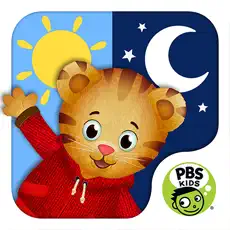
Pre-school aged children can learn about morning and bedtime routines with PBS KIDS’ Daniel Tiger. Help Daniel Tiger get ready for school in the morning and for bed at night through imaginative play and songs.
We like it because there are sing-along songs that make routines fun and a musical timer to keep routines such as teeth-brushing on track.
Pros: Simple, age-appropriate for toddlers.
Cons: There’s no order required for following the routines, and it’s limited to morning and evening routines only.
Available on the App store and Google Play
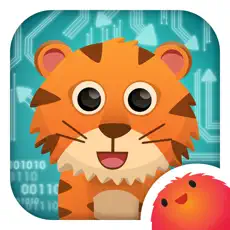
Pre-coding logic game for kids
Why? We think introducing children to coding early is gives children a head start in learning how to code with Hopster Coding Safari. This animal themed pre-coding logic game to help little ones learn the fundamentals of coding. Children are presented with a series of logic problems to solve, getting different animals to where they need to be.
Children learn: The fundamentals of computational thinking
This game will engage young children in computational thinking – the fundamental techniques needed to understand coding – without them realising they are learning!
Pros: Wide range of activities, links to early years learning objectives.
Cons: Paid subscription based and not a lot offered without paying.
Available on the App store

Shape-sorting puzzles great for fine motor skill development
What makes Busy Shapes so clever is the way the puzzles gently gets more challenging, motivating little ones to find solutions to each puzzle through experimentation. From shape-changing to colour-mixing to hidden holes, we’re impressed with how the game spurs out-of-the-box thinking, stimulating curious young minds. The app’s designers say it’s inspired by the pioneering works of child theorist Jean Piaget (1896-1980), who believed that “children are little scientists” and that a child’s thoughts are built through experiences that encourage him or her to engage in the reasoning process.
Pros: Free version includes a lot of activities. The challenge increases, with multiple objects and holes of different shapes, moving objects, obstacles to get around or to move, and finally the need to use tools to move the objects. There’s no direction and no help. Children must explore and discover on their own how to get the objects into the holes.
Cons: Doesn’t seem to be a way to get to earlier levels.
Available on the App store and Google Play

Khan Academy Kids is a free, fun, educational program with thousands of activities and books that will inspire a lifetime of learning and discovery for children ages two+.
The app is designed by experts in early childhood education to guide young learners on a delightful journey through key skills in maths, reading, phonics, writing, social-emotional development, and more. It includes thousands of lessons, activities, books, and games that are age-appropriate for preschool through year two. With catchy songs and yoga videos, little ones will also have fun moving, dancing, and getting the wiggles out.
Pros: The variety of learning topics and the creative approach to activities offer breadth and depth without it feeling overwhelming.
Cons: Animations could use more captioning; written instruction and language options.
Available on the App store and Google Play

This app aims to strengthen children’s cognitive skills, concentration and memory with activities such as tracing letters, spelling with an A-Z of animals, counting, jigsaw puzzles, spot the difference, pet salon, feed the animals and more. Your toddler will really enjoy playing this game as every little action has been thoughtfully designed for an effortless gameplay.
Pros: Fun cheerful characters, good for young learners working on fine motor skills, problem-solving skills, spelling, and language acquisition.
Cons: Limited activities and full screen ads in free version, some complaints about price of full version.
Available on the App Store
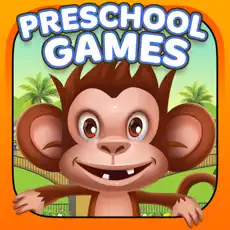
This app for toddlers has more than 1000+ fun and educational activities and games! This delightfully interactive smart app helps children learn ABCs, numbers, colours, shapes, and more. Children can skip, sing, and dance to popular nursery rhymes with Moolingo the monkey.
Pros: The amount of activities.
Cons: Paid subscription service.
Available on the App Store and Google Play

Thoughtfully-made educational games for children aged two to eight, including early literacy skills using a comprehensive program full of interesting activities, building blocks for maths confidence, and tools for navigating social skills, empathy, and confidence.
Pros: Personalised to children’s interests across subjects, learning grows with child.
Cons: Paid subscription service.
Available on the App Store and Google Play

Features letters and word learning games to help children learn basic tracing of alphabet, letters, words and numbers one to 10.
Pros: Full app is free.
Cons: Some complaints on sound issues.
Available on the App Store and Google Play
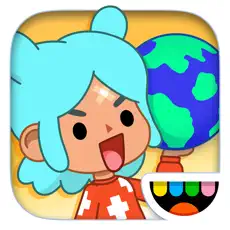
The Toca Boca suite of apps for children is an interactive way to explore the world by cooking, cutting hair, building a neighborhood, and taking care of pets. For the youngest users, try a role-playing app like Toca Doctor or a simple app like hairstyling (children love the hairdryer!). And as they grow, children can design and build their own city with the Toca Life apps.
Pros: Dozens of games to choose, including some free, and ome games can be purchased as a bundle for discounted pricing. Variety of games for beginners, animal lovers, budding engineers, and more.
Cons: Not all apps will be of interest to all.
Available on the App Store and Google Play
Related:
Teaching children emotional awareness, in themselves and recognising emotions in others, is an important part of children’s growth and wellbeing. Understanding emotions is also not something ingrained, and not necessarily an easy thing to teach or grasp, especially as these small humans’ brains are rapidly developing in all areas.
In children, all kinds of changes are happening at the same time, and some areas, such as children’s language skills, develop before their self-regulation skills. This means that while your child may have a broad vocabulary, they still may not be able to put into words how they’re feeling. A toddler’s capacity to regulate their emotional state and emotional reactions can affect everyone around them, and can carry on to academic performance, long-term mental health, and their ability to thrive in a complex world.
Helping children to identify and label emotions is an important first step and something Little Scholars focuses on in our educational programming. Small children do not yet have the vocabulary to identify feeling words like angry or frustrated, or have the skills to “read” facial cues or to interpret body language.
Even the littlest Scholars are learning emotional intelligence by communicating how they feel, according to Jodie, a lead educator in the nursery studio at Deception Bay.
“If a child is expressing an emotion or a behaviour, [we question] is it because they need something from us? ‘I can see you’re feeling sad, how come you’re feeling sad?'” Jodie says. “If we begin to speak to the babies about what they’re feeling, information I’ve learned from [child psychologist] Justin Coulson, it will relate to five things, either them being hungry, angry, lonely, tired or stressed. It’s often one of those things that will cause big emotions.
“They’re obviously not able to completely communicate with us on what their needs are. I’ve learned not to ask the children what they want, but what do they need?” she says. “Maybe they’re feeling hungry and frustrated, so offering them an apple could work, where they can get some of that anger out through crunching. Maybe they’re feeling tired, but they need a little more comfort first. What other feelings are they feeling?”
At our Burleigh campus, children and educators have feelings chats as part of their morning routine. In the Toddler studio, children ask their educators questions such as ‘why is she angry?’ providing a great opportunity for further conversation. Educators support the children in understanding their emotions through discussions as part of their morning routine.
“During the morning, we will sit down for our morning meeting [with children] so when we come inside, we’ll ask how they’re feeling, they’ll express how they’re feeling – happy, sad, ‘good’, and throughout the day we’ll do activities and they’ve gotten really good at recognising and showing those emotions,” says Sasha, lead educator in the Toddler 2 studio. “It’s crazy to see how much they can take in and understand.
“It’s harder for some of the younger ones [to grasp], but we still try to get them involved by asking ‘how do you think that person looks in the photo?’ or ‘how could we make that person feel better?’ and get them to try to understand how others may be feeling,” Sasha continues. “They’re getting really good at being able to understand their own emotions, and we try to support them in how they can support themselves if they are feeling sad, or feeling overwhelmed and need space. Next year they’ll be learning more about how others feel and how we can help them.”
Raylene, an educator in the senior kindy studio at our Yatala campus, says the benefits of exploring emotions, all emotions including the hard ones, allows children to not only identify them but develop the skills to go through them.
“One child mentioned that she would cry all day if she couldn’t see her mummy again. Mr J mentioned that he gets angry when he can’t find his treasures. Mr T doesn’t like when Mummy drops him off etc which led to a discussion about developing strategies to cope with these emotions when they occur. [It’s] so powerful. Mr J said that he could take a big breath and then think about where he put his treasures. Miss K said that she would give her sister a big hug if she couldn’t hug Mummy. Mr T said he could come with Miss Ray,” says Raylene. “Ensuring educators create opportunities for children to communicate their feelings and then giving children the tools to not only identify them, but develop strategies to manage them, rather than saying ‘you’re OK’ is the power moment.”
Tori, an educator at the same campus agrees.
Jodie is right. Research shows that children who learn how to understand emotions in themselves and others are better able to regulate their own responses to strong emotions. Helping children to identify and label emotions is an important first step, and this is supported by the Early Years Framework in helping children develop a strong sense of identity.
Further information
From the moment your child is born, you are inundated with information on your child’s growth and whether or not they’re hitting their developmental milestones – the sets of functional skills or age-specific tasks that most children can do at a certain age range.
Comparison is often called the thief of joy, and you face it everywhere you look as a parent – from the other children in your mum’s groups, doctor’s visits, even what you’re searching online will show up again in your targeted ads and suggested content on social media – your child will be measured against others.
As if parents need more to be anxious about, or do they? We know every child is different, so it begs the question, do development milestones really matter?
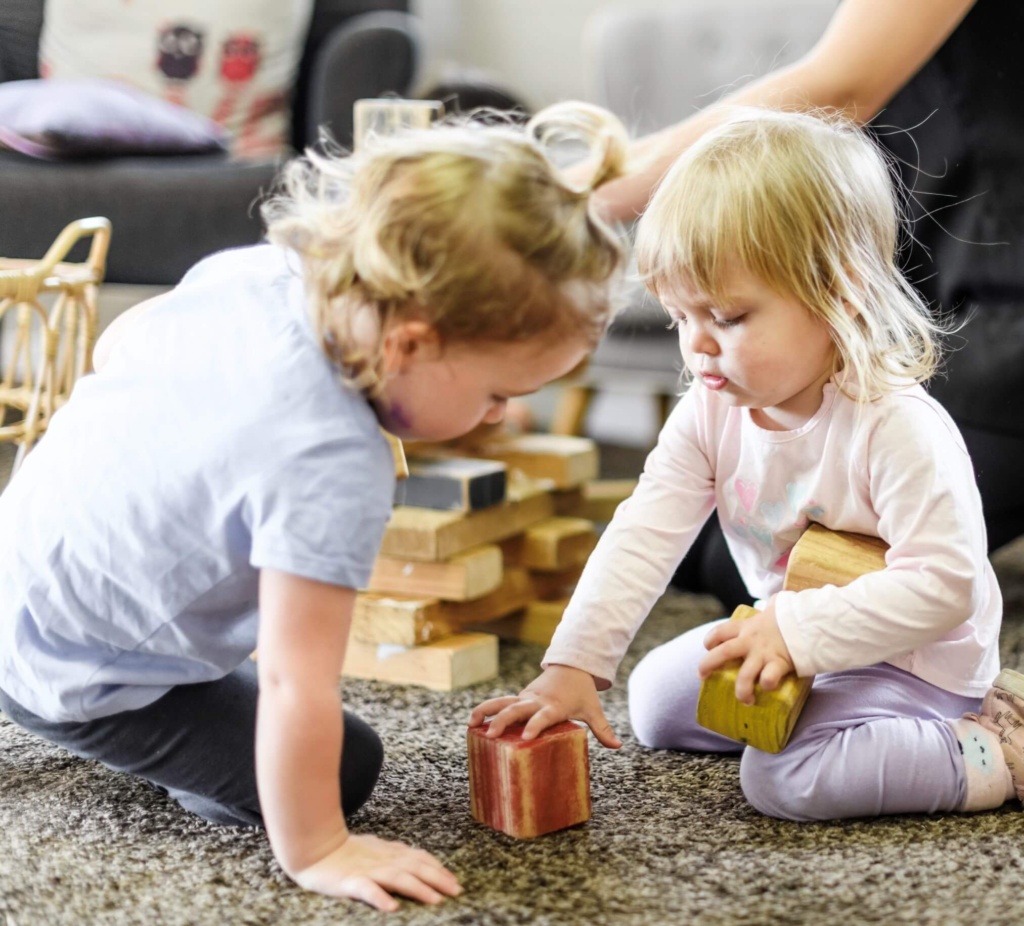
Recently in the US, Centers for Disease Prevention and Control (CDC) and American Academy of Pediatrics (AAP) updated the guidelines for child developmental milestones for the first time since 2004, aimed to better reflect the data of when children reach milestones such as crawling, walking, speech, and more, as well as some of the early indicators of autism. The changes were met with mixed reviews from parents and child experts, bringing a lot of conversation about children’s development to the forefront.
In Australia, our early childhood developmental milestones come from The Australian Children’s Education & Care Quality Authority (ACECQA)
According to the ACECQA, development milestones are important for your child’s:
So, according to experts, development milestones do matter, but with a range of abilities across each age group, when should parents take it seriously, and when can they worry less about what their child is and isn’t doing?
Children will meet these needs in their own time and are on their own journey. I always remember hearing how children meeting their development domains, can be represented like ‘popcorn kernels, when placed in hot oil, they will pop at different intervals,’ this can be seen how a child will shine and develop at different stages. – Susan Cooper, pedagogical leader, Little Scholars.
“While it is important to monitor children’s development and assess against the developmental milestones, we must be mindful not to place children in a box and begin the process of a check box system. Early childhood professionals place such value in assessing children’s growth and development and through assessment, in partnership with families, early intervention can be met for their child, should it be deemed necessary,” says Susan Cooper, pedagogical leader for Little Scholars.
At Little Scholars, your child’s development is assessed through the Early Years Learning Framework and the National Quality Standards, and is displayed through our program The Collective. Developed by Little Scholars, The Collective is a program that encompasses all aspects of Little Scholars, including our children, families, educators and community. We use it ensure that our curriculum, environments, and relationships enable children to grow and fulfil their potential, actively learn through play and engaging intentional teaching. We aim for our inspiring programs and strategic planning to contribute, influence, and shape the development of our children, educators and community.
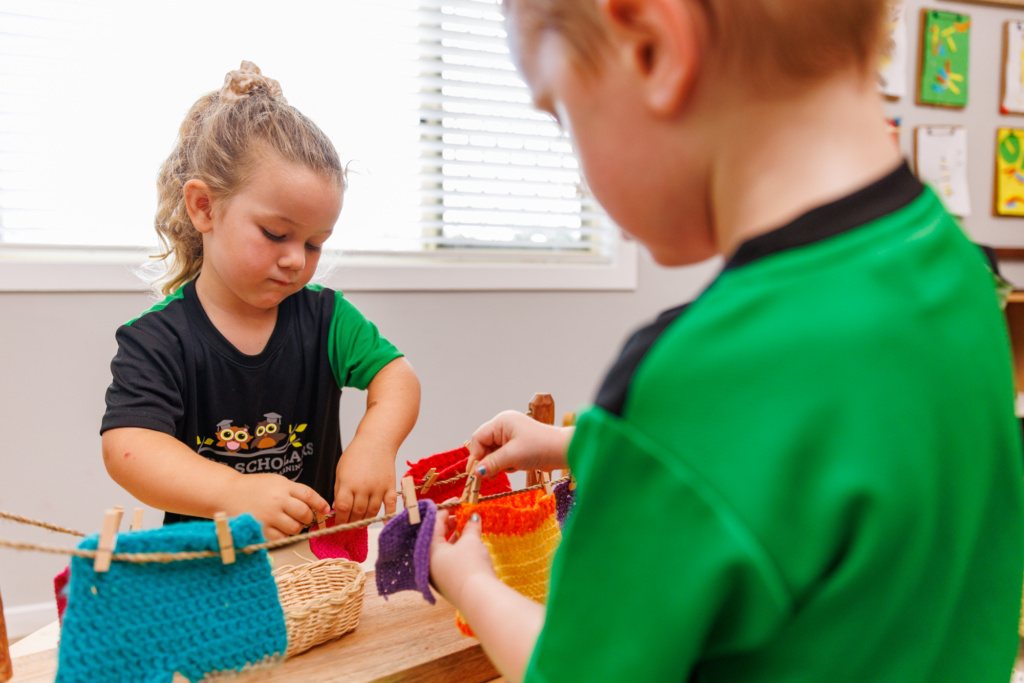
According to Skye, assistant campus manager at Little Scholars Pacific Pines, developmental milestones helps educators develop their educational programs.
“Milestones are important to monitor and keep track of as they can help us as educators and also families understand why a child may be exhibiting certain behaviours,” Skye said. “They also help gage what children’s interests, strengths and barriers are. Understanding and knowing age-appropriate milestones will help educators provide a program for each child’s individual needs.”
Your child’s weekly program evaluation and reflection informs parents of the significance of the learning experiences that have taken place over the course of the week, how those experiences tie into the Early Years Learning Framework, and include observations regarding your child’s development.
“We educate the families about the importance of milestones and when to be concerned for ‘red flags.’ I think it’s incredibly important that us lead educators are having frequent conversations about their children’s development, where they’re excelling and where they need further support,” says Holly, a lead educator in a Senior Kindy studio at our Stapylton campus.
“I have educated my families, especially during times like in my parent teachers about the importance of children meeting emotional development milestones. We also have a few Prep teachers who are parents at our campus, who have reiterated to us how critical it is for when children that go to Prep that they are able to confidently self-regulate their emotions and when to seek help, such as asking a peer for help, attempting to solve a problem themselves before asking a teacher – those kind of strategies.”
We’re here to ensure children learn and grow to the very best of their ability. Sometimes a child doesn’t meet his or her developmental milestone, and it might warrant a chat with our families about our observations. The conversation may begin by us asking the parents how they feel about their child’s development, and if they have any concerns. We’ll share what we’ve observed, and share examples of our observations – either written, photo or video. Families may become emotional throughout the discussion, and we understand how hard a conversation like this can be to digest. Please know we’ll always give time and space for our families, and we’ll support your next steps and help in any way we can.
“We do need to be guided by the developmental domains, as most children with developmental delays are not identified early enough to benefit from early intervention and they then enter their formal schooling at a disadvantage, which can set them back,” says Susan. “When we consider how much time children spend in our care and our qualified educators ability to track development through observational learning records, for parents, we are their trusted source.”
All of this might make you wonder if you can help aid your child’s development? The answer is a resounding yes!
For anxious parents who feel like worrying about whether their child is hitting their developmental milestones, Susan says while we need to be guided by developmental domains, there’s a range within those milestones.
“More often than not, families place high expectation on their children and make comparisons with others. We need to understand that children will meet these needs in their own time and are on their own journey,” Susan explains. “I always remember hearing how children meeting their development domains, can be represented like ‘popcorn kernels, when placed in hot oil, they will pop at different intervals,’ this can be seen how a child will shine and develop at different stages against another child, when the environment is supportive to learning and growing.”
As parents and as educators, it’s our job to keep children safe. For children, it’s their job to explore, push limits, move their bodies, and happily tune out what they don’t want to hear.
So when a child is engaging in risky play – which is so important in a child’s development as it furthers their frustration tolerance, critical thinking skills, self-confidence, resilience and so much more – it can also put the watching adult into panic mode, often triggering the phrase ‘be careful!’
But, if that adult expects the child to immediately stop what they’re doing after uttering (or shouting) those two words, they probably have another reality coming. ‘Be careful’ isn’t terribly effective because it’s vague and lacks specificity for a toddler. Saying it on repeat will likely lose any small amount of effectiveness it did carry because, well, being told to be careful isn’t any fun. Or worse, hearing that phrase could create fear and dim a child’s curiosity and sense of adventure.
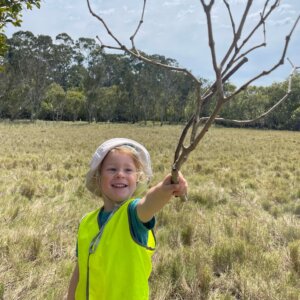
As adults, we also need to think about what we mean when we say ‘be careful’. Do we want the child to stop what they’re doing? Do something differently? Slow down? Do we think they will get hurt? Every situation is different, but it’s worth thinking about the intention behind the phrase. Is it possible the child could get seriously hurt? Is what the child is doing put another child at risk? Is there something valuable that you don’t want damaged?
Perhaps rather than ‘be careful’ you say:
‘Looks fun, just watch out for your little sister!’
‘Do you hear the cars? The road is close by.’
‘Before you throw that stick, just watch for the window over there.’
‘Do you feel safe?’
‘I’m here if you need me.’
‘Maybe just slow your body down a little bit.’
‘Focus on where your feet are.’
‘Using two hands might help you hold on tighter.’
‘What’s your plan for coming back down?’
Even just asking ‘does your body feel safe?’ may give your little one a second to pause and think about what they’re doing, and perhaps change course if needed.
For adults, when they observe children participating in risky play, if they approach it with curiosity and give specific feedback that focuses on creating awareness and problem-solving skills, it helps your toddler becomes more confident in their skills, abilities, problem-solving and learning.
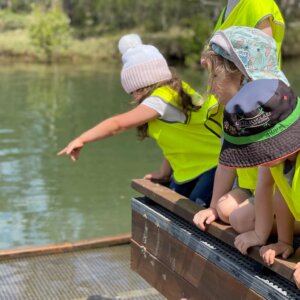
Risky play is something to be encouraged. Something happened between the time when many parents of small children were little ones themselves, to now. We may remember our parents letting us go play unsupervised, as long as we were back before dark. That play may be some of your best childhood memories. Society has become more risk-adverse in recent decades, from parents worries about kidnapping and injury, to the fear of judgement from others thinking they’re bad caregivers can drive many parents to intervene before their child can engage in risk during play. But those fears could actually be hurting children’s development by hovering over them constantly. Research shows that engaging in risky play can actually reduce the risk of injury, too. Something parents and educators can do is teach young children to risk-assess.
For example, rather than worrying about if your child is going to get a sharp bindi seed in his or her foot from running across grass barefoot, involve your child in the risk assessment. In this case, point out what a bindi weed looks like, and encourage your child to look for the weeds with shoes on before deciding if it’s a good idea to take shoes off. By assessing ‘risk’ situations together, your child will learn increased ability to hypothesize, predict, experiment and investigate, and your child will feel you trust their ability to make safe decisions. it’s all about balancing the risk with the benefits. Imagine if your child was running barefoot in the grass and you spotted bindis and yelled ‘Be careful!’ your child could be bewildered by your cry, ignore your yelling and keep going, or could possibly stop, landing perfectly on the sharp weed you want him or her to avoid.
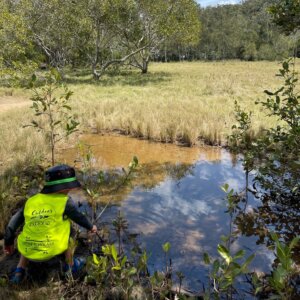
At Little Scholars, risk assessment is a part of our programming, such as bush/bush kindy or loose parts play, where children have the opportunity to guide and direct their own learning tying in with activities that are child-led and learning is a process of discovery. Sites are pre-risk assessed by educators, and children are involved in the risk management process, guided to look out for themselves and have a group discussion about it before play.
“It’s all about setting boundaries with the children and asking them about what risks they think may be involved before they go ahead,” says Melanie, operations manager for Little Scholars. “We wouldn’t use ‘risk’ with little ones, so it may look like ‘how can we be safe when we play in this area?'”
“Play is a powerful behaviour that is often a missed agenda for many early childhood professionals. Extrinsic agenda will often lead to children being told what they should experience, as opposed to living the experience, says Susan, Little Scholars’ pedagogical leader and practice manager.
Susan highlights Lev Vygotsky’s theory of play as a lived experience.
“Too often, adults feel the need to apply an adult agenda, often with good intention, however this often has the potential to limit the actual multifarious nature of what we call play.
“As adults, we need to trust in the play process and accept that children will create situations in which they can act out emotions in ways they feel they can. When given the freedom to do so, children will demonstrate ability for exploration, imagination, and decision-making.”
Related:
After getting the little ones to bed each night, you are probably just about ready to turn in yourself. It can be hard to motivate yourself to do anything more than scroll through your phone while brushing your teeth! Although this may be your own night-time ritual, spending a little bit of time away from the screen to get a few things done might make your tomorrow go a whole lot smoother.
A good morning routine starts with a little bit of preparation the night before, so here are our ideas for some little habits and rituals that might make life easier in the morning for families, and can be done before anyone hits the hay
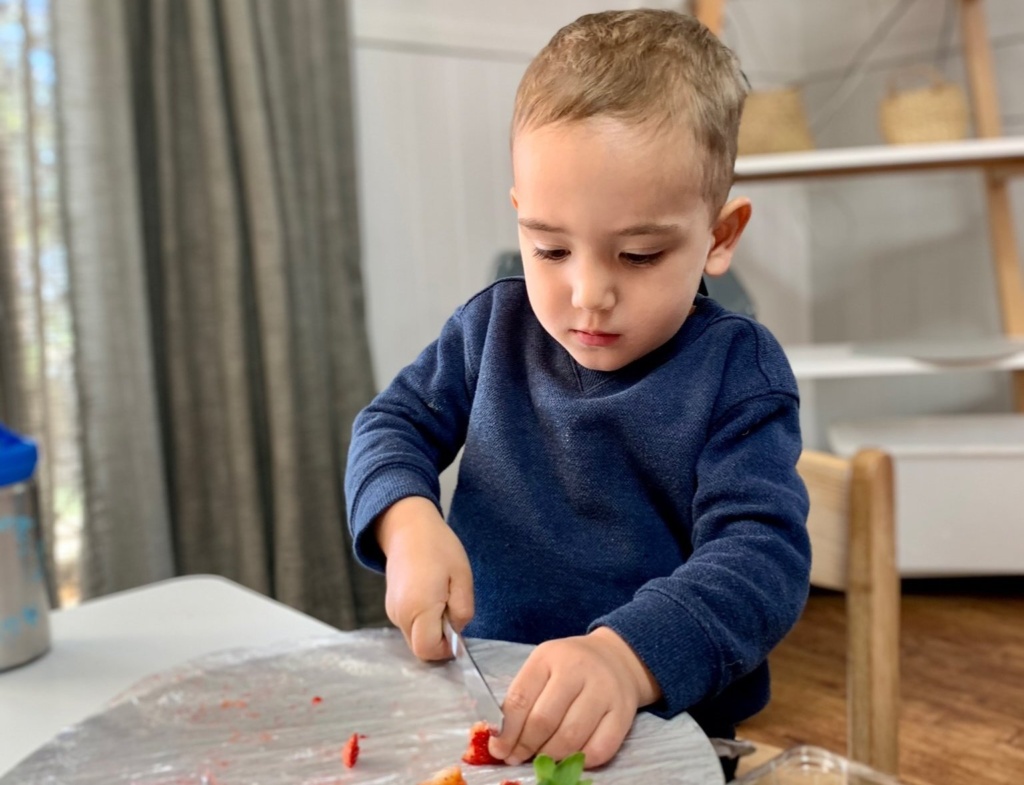
You’ve probably learned the hard way that packing lunches in the morning may make you late for work, school, or kindy. Leftovers from dinner packed in a contained whilst dinner is being served makes it nice and easy to grab in the morning, alongside some fruit and snacks. Or, get your child involved in lunch preparation! By letting them choose what fruits, veggies, and snacks they will have for lunch means they will more likely eat what’s in their lunchbox.

There’s nothing like a tidy kitchen bench to wake up to in the morning! Cleaning up the kitchen after you finish eating closes out the last meal of the night and ensures you have clean surfaces to wake up to in the morning. Run the dishwasher before you go to bed so you can wake up to a full set of dishware in the morning – no one wants to wake up to dirty dishes in the sink.
Besides the kitchen, give yourself some time to tidy-up the house before going to bed. This will make your home feel nice and fresh in the morning and everything will be much easier to find as it will be where it is supposed to be! If you’re struggling to feel motivated to tidy-up, set a timer for 15 minutes and see how much you can tidy before turning in. Include the whole family by making it a competition to see who can do the most in the time allotted. You’ll be surprised just how much you get done!
Some people might even like to prepare breakfast the night before, like soaking overnight oats or making hard-boiled eggs. Prepping breakfast muffins or mini quiches on a Sunday afternoon are great options for a ‘grab and go’ breakfast come Monday morning.
One of our favourites from the Little Scholars Summer menu is our Breakfast Cookies which are super simple to make and a delicious, easy breakfast for the morning.
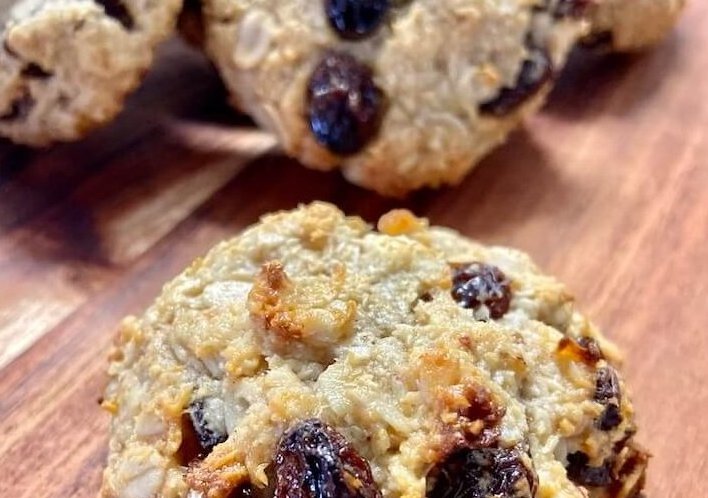
A great habit to get into is choosing everyone’s outfits the night before. Have your child choose what they want to wear the next day, including socks and shoes. This saves the out-the-door battles you may face with your little ones, who are never prompt when you need them to be! Set out what you’re wearing the next day as well, and that includes getting any ironing that you need done in the evening, or when putting laundry away. This is much better than running around the house in the morning looking for your favourite shirt or work uniform! Gather any sports uniforms, workout clothes, or a spare outfit for your little one and put them in a bag next to the front door.

After getting ready for the next day, it’s important to remember the one thing that will make tomorrow go smoothly and that is getting a good night’s sleep. Set yourself a little bit of time to wind down before going to sleep. This can be whatever relaxes you, watching TV, showering (which can also save time in the morning) or reading. Try to avoid scrolling through your Instagram feed or checking your work emails. You deserve the rest!
Looking for an easy snack to make with ingredients from home? Here is one of our delicious snack items from our Little Scholars menu. We had to share this recipe as it is super easy to make and you can add whatever toppings you want! You probably already have these ingredients in your kitchen!
This recipe makes approximately six scones. You can double this recipe if you wish to freeze them for later or to feed more people!
Serve with your favourite toppings like Jam and Cream for an extra yummy treat!
Growing up involves a lot of falling, tripping, bumping into things and it can cause big feelings in our little ones when it happens.
Something as small as a scrape on the knee may not be a big deal for an adult but may be a big issue for our little ones. We want to validate their feelings by letting them know we understand they are hurt, while at the same time not making a big deal out of something that could be a minor injury.
According to research, parents who are more anxious and distressed, are less able to support their children when they get hurt. This increases the distress of the child, and that child is less likely to be distracted by toys or conversation. It’s important to pause, take a deep breath and assess the situation and see what response will be best helpful to your child. The solution could be as simple as a hug!
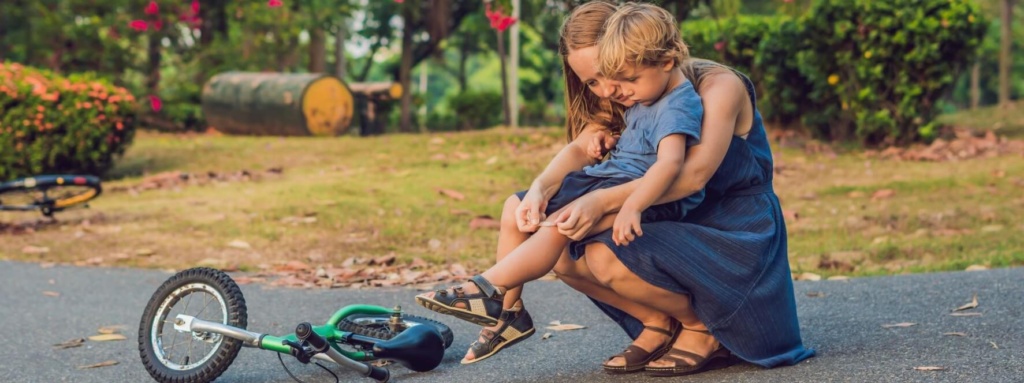
“I can see you hurt your finger, it looks like it hurts! Can you tell me what happened?”
Acknowledge that you can see that they hurt themselves and have them to explain how it happened. This allows them to communicate openly with you and explain how the injury occurred, even if you may have seen it happen.
“I know it hurts, I’m here for you.”
Let your child know that you feel their pain and you can understand why they are upset. It’s important that your child knows this as they will always feel comfortable coming to you in times of need.
“Ouch! I can see that your knee really hurts! Would you like to put a band-aid?”
Collaborate with your child and find out what the best solution may be to help. Ask your child if ice, a cold compress, or a band-aid will help their injury. This offers them a distraction and helps to move along the healing process.
“Take a deep breath. Can you tell me how you are feeling?”
Give your full attention as you listen to them explain why they are hurt and encourage them to take deep breaths. Get them to take through their feelings. They might be mad that they hurt themselves so they can’t continue their activity, or they may be frustrated that something didn’t go their way. Listen as they go through the motions of telling you what happened.
“Would you like to choose a band-aid? Here, you can pull the paper off.”
Distractions can help move on with the recovery process. Once you have acknowledged their pain and given them a chance to express how they feel, allow your child to help with the recovery process by opening the band-aid wrapper or applying the ice.
If your child refuses a hug or doesn’t want to talk to you, give your child a chance to regulate themselves by saying something like, “I can see you are really upset about this and it’s okay to be upset, but it doesn’t seem like what I am saying is helping you. Take some deep breaths, I’ll be right here when you need me.”
You aren’t ignoring your child or not validating their feelings, they may just need a little time on their own because we all do sometimes! The main thing we want our children to know when they are hurt, is that they are safe with us, we understand how they are feeling and that we are here to care for them.
Have a fun trip planned with the family coming up? School holidays are here and we have some handy tips to make things easier for you and your family when it comes to packing for a trip!
Making a list will eliminate thinking and stress by having everything you need laid out. If you have gone on a few trips before, you may realise that you usually need the same things each time! By having a packing list template, you can adjust it as necessary for each specific trip as well as for each child as they age. Use the notes app on your phone as this is easily accessible and shareable too.
To avoid leaving your favourite pair of jeans behind because they weren’t put in the wash ahead of time, wash the clothes you would like to wear on your trip a few days ahead of time and put them aside ready to be packed.
Packing each family member their own bag which they can carry will go a long way in simplifying travel. Each person will have their clothes, activities, and necessities in their own possession. This is to prevent clothing from getting mixed up and being able to find what needs to be found quickly. We understand this isn’t always possible, however packing cubes can come in handy for separating each person’s individual items as well.
Packing cubes keep clothes neat and contained. Put together the same type of items for each cube such as pants in one, shirts in another and socks and underwear in a smaller cube. Labeling or colour coding the cubes will make things even easier in the instance you need to access things quickly. Kmart sells packing cubes in a set of 3 and space-saving bags that can be deflated for only $9 and will make packing your luggage more efficient. If you are on a budget, use large zip lock bags to organise your clothing.
Unfortunately, sometimes airlines can lose your luggage. To avoid the stress of having to buy a new wardrobe immediately, pack a spare change of clothes for each person in their carry-on or a backpack in case of an emergency. This can also be helpful if the luggage is buried deep in the back of the car on a road trip and someone needs a new set of clothes due to a spill or accident.
If you are travelling with little ones at night, keep their PJs in a bag so they can be changed along the way. They will be more comfortable and will be easy to transfer to bed when you get to your destination.
We are excited to welcome Susan Cooper, our new group Pedagogical Leader for Little Scholars School of Early Learning.

Susan will support educators to guide and influence children’s love of learning by fostering family engagement, ensuring fidelity to Little Scholars curricular philosophy, using data to evaluate the effectiveness of the learning program, and ensure we are exceeding standards to optimise learning environments and prepare children for successful futures.
Through pedagogical leadership, Susan hopes to raise the benchmark to overall quality of teaching and recognises that providing children with strong foundations for ongoing learning and development is underpinned by a strong pedagogical practice.
Pedagogy is a form of teaching strategies in the practice of educating. It is the techniques, strategies and approach taken by educators to let learning and development to take place. Pedagogy refers to the interactive process between the teacher, the learner and the learning environment and provides reason to the design of learning spaces, materials, and resources on offer. Pedagogical Leadership supports educators in relating their pedagogy to content knowledge and educational theories.
Susan’s primary role will be to provide leadership to pedagogy and support educators in relating their pedagogy to content knowledge and educational theories. Susan will be working across the 13 Little Scholars Early Learning Campuses mentoring and coaching our educational leaders to implement curriculum delivery. Susan will inspire educators to employ new approaches to their teaching against up-to-date research, which will shape the quality of experiences and interactions across our campuses.

Susan has worked in the Early Childhood Sector for more than 16 years and has extensive knowledge in the field of Pedagogical Practices. Having worked in many fields within the Education sector, from operating a family day care, to being an educator within long day care sector as well as outside school hour care services, through to management and leadership.
“To take on this role is exciting as I can share my passion, influencing pedagogy approaches and practices and place emphasis on children’s play to promote continuous child development and quality outcomes for children,” she says.
Susan is passionate about advocating for children’s rights and is a firm believer of a child-centred approach and that the quality of interactions between adults and children play a fundamental role in stimulating early learning.
According to Jae Fraser, founder of Little Scholars School of Early Learning, pedagogical leadership is about leading or guiding pedagogical practice, supporting Little Scholars educators in their work with children and families, and translating the Little Scholars values and principles into practice.
Finally, after more than two years of us Australians being grounded, state and international borders have opened up and we can finally get up in the sky and explore like Aussies are meant to do!
However, a trip with children may be even more daunting than it seemed a couple of years ago – dealing with masks, fears of illness, testing, increased stops, fewer route options available, journeys may be longer than usual, and when you have little ones, more time in airports and in the air is something you have to consider.
We have some ideas on how to prepare ahead, fill the time during the journey, and how to help little people deal with their first bouts of jet lag.
Airlines have to be alerted to travelling children, even if they’ll be sitting on laps ahead of time. If the baby hasn’t arrived yet when you book, book for only people who have names, then contact your airline to update them after the baby is born, they can add their names closer to check-in.
A great suggestion from Flight Centre is, for example, for a family of four people, try to block out the window seat and the aisle seat, leaving the middle seat empty, or both aisle seats if it’s a row of four and do the same for the row behind. The middle seats on a plane are generally the last seats to be filled and you can usually luck out with some space for the kids to sprawl out.
If your baby is sleeping a lot or still taking breast or bottle, the window seat is great to lean on. If your older child is quite active, an aisle seat may be easier to get in and out, especially for bathroom breaks.
If you’re hoping to bring car seats onboard, you may have to alert the airline of your intention to travel with a car seat onboard when you book your tickets, and check they’re on the approved list. While many larger planes offer bassinets, they’re often limited and may either need to be pre-booked or are offered on a first-come, first-served basis, so ask your airline.
Children’s meals are usually on offer, but like any special requirements with meals, they generally need to be booked with your tickets. Also, in-house entertainment is not always guaranteed free with the price of your seat, so ask ahead of time, and if you think movies or games will help your child pass the time, look into it ahead of time or plan on having your own device ready and stocked up with child-friendly goodies.
Since Covid-19 is still a reality, check before you go about vaccine, testing and mask requirements for everyone travelling both on the flights and at your destination.
If your child is old enough to comprehend what’s happening, it’s a good idea to talk to them about the trip ahead of time.
“Our five-year-old daughter Sloane is a little anxious about change, so when we have travelled overseas we discuss it in detail before we go,” according to Brent, general manager of The Scholars Group.
“We talk about what she can expect, and what fun and exciting things may happen during the journey and at the destination. We also talk about sleep patterns when she arrives, and depending on the time difference, how she may be a little more tired than usual and we will “try” and stay up to normal bedtime as soon as we can even if we have a little nap during transit. We prepare, prepare, prepare!”
You may remember a time when all you needed was a backpack to join you halfway around the world. Those days are pretty well over when you have children. Multiple suitcases, digital devices, comfort toys, snacks – it can feel extreme even if it’s domestic travel.
Most airlines offer early boarding for travellers with children. This can allow you extra time and space to settle children onboard but it also lengthens the amount of time spent in cabin confinement, so the choice is yours.
Dress your child in bright clothes so that they stand out in a crowd and if they’re old enough to understand, point out people they should talk to if they become separated from you and arrange an obvious meeting place they can look for if they can’t see you.
Get to the airport early so that your child can run around or play for a while.
Claire, operations support officer at Little Scholars, travelled to her home country of England with a one-year-old and was pregnant with her second.
“The best thing ever was dungarees! On the way over I found it hard to pick him up and juggle my bags,” Claire says. “On the way back I put him in a pair of dungarees and when needed I could scoop him up like a bag and walk with him. He loved it and would giggle madly as we walked along.”
Change your baby’s nappy right before boarding, because space is cramped inside plane toilets.
While generally, children under two are free or low-cost on most airlines, if you can afford the extra seat, it might be something to consider, especially for a long-haul flight, says Melanie, operations manager at Little Scholars, “Even though we didn’t have to book a seat for Harvey as he wasn’t quite two years old, we did anyway so we had some extra room,” she says. Everyone will be more comfortable with their own seats, especially parents who would otherwise be holding a child for hours into the journey, which can already be uncomfortable with limited legroom. An alternative might be to book rows with extra foot room, though keep in mind children aren’t allowed to sit in emergency rows.
Also, if you purchase a seat for your child, bringing his/her car seat is safer, but it can be a lot to lug with your child and carry-on all the way to and from your gate so you may consider renting a car seat at your destination.
If your baby is formula-fed, airlines will allow you to bring sterilised water, bottles and formula on board, so pack as much as you think you’ll need for the journey and some extra to cover any delays. Airport security may ask you to open the containers and taste the contents. If you’re travelling to other countries, it’s a good idea to bring enough formula for the entire trip, as formulas differ in each country, and a change could upset your baby.
Another suggestion is to bring a small, compact stroller that you take on board. It saves time at the luggage carousel and means you can hit the ground running when you land rather than having babies on your hip or dragging a slow-poke toddler behind while trying to catch your connection.
Take off and landing can be especially painful for little ears. For babies, offer a dummy, breastmilk or a bottle to help with ear pressure as the sucking motion can help pop their ears. For older children, having chewing gum or lollipops on hand can help them with the ear pressure on board.
When travelling with small babies or toilet-training toddlers, accidents can happen. Make sure to have extra clothing, nappies, or underwear for everyone, including parents, in your carry-on. Also include some zip-lock bags to keep any soiled clothing in. No one around you wants or needs to experience scents that may stick in the air. You also should consider bringing a changing pad, either one from your nappy bag or disposable ones, because there are no guarantees there will be changing tables on your flight. Melanie says bringing extra blankets in carry-ons can also help for extra comfort when plane pillows and blankets don’t quite do the trick.
Meals on planes for anyone aren’t often gourmet, but for picky eaters, they can be a hard no. As we mentioned above, you can often pre-book children’s meals if meals are on offer. But also, feeding little ones pre-flight, and having plenty of bring-your-own snacks available for them, can make things easier and cheaper. Plus meal service can be slow and patience may wane as time on board go by. Encourage your children to drink frequently to avoid dehydration. You can often find filtered water fountains near the gate, so bring refillable bottles so you’re not waiting on flight attendants to refill your glass.
Sleeping on planes is challenging at best for anyone.
“I travelled to Thailand when my son was four months and my stepdaughter was six. Our saviours were wraps for my son and the Love to Dream swaddle for sleep time in the bassinet provided by the plane,” according to Skye, an educator with our Yatala campus. By keeping sleep time routines and items as familiar as you can for your child, they may sleep more soundly. A wrap or carrier is also helpful for settling the baby while in flight. Just remember children have to come out of any carriers or the bassinet when the seatbelt light comes on.
For older children, it may be helpful to bring their pillow from home, as they’re more comfortable than the ones airlines hand out, and of course their favourite sleeping toy or blanket. If they sleep with noise, sometimes the plane’s hums may be enough, or using an app on your phone (that works in airplane mode) with earphones could do the trick.
Entertaining children on a long flight is another challenge you should be prepared for.
“My best tip is getting little trinkets/toys and wrapping them up for my daughter. I will give one to her as she needs it, so there’s something new and interesting to break up the time on the flight,” says Jaimie-Lee, enrolment officer at Little Scholars. “It could even be an old toy she doesn’t play with or has forgotten about.”
Jaimie-Lee also makes sure to stock up on no-mess activities such as paperback books, colouring books and pencils. It’s best to check big box stores such as Kmart, Big W or Spotlight, which often have great activity sets for children, she says.
“When I travelled with my then-four year old I brought mini magnetic boards games to play on the plane and colouring-in packs,” says Janice, who’s based in our Yatala campus. “I also talked to the online staff letting them know I was travelling as a single mum, and they really did look after me on the plane for my bathroom breaks.”
“I made [my daughter] a busy book, so each page had different activities such as Velcro’d matching game, buttons/clips, as well as reusable/wipeable books,” says Charlotte, area manager for Little Scholars. “As well as a different small game or fidget toy to open each hour.”
It’s unavoidable, especially if you’re travelling more than three time zones, but there are ways to deal with jet lag that will help the whole family. First, sleep when your baby or child sleeps. This is one of the most important tips to adhere to in order to cope with a jetlagged child. A rested mum or dad is necessary to deal with an overtired little one! The amount of sunlight we receive helps set our internal body clock, so have your children out in bright light (careful to avoid sunburn, of course!) as much as possible.
If possible, plan a journey that incorporates stopovers. By breaking a trip up into more manageable time-zone blocks, your child’s jetlag will be less severe and so will the disruption to family life. The added bonuses of longer stopovers are the opportunities to stretch legs, the ability to sleep in a proper bed (and therefore be more rested for the next part of the journey) and the opportunity to see somewhere new!
The direction of travel influences how your body responds to the time change, according to Flight Centre. When travelling east, you might try to keep your child up as late as possible so they go to bed closer to the destination travel time. When travelling west, your child may have trouble falling asleep that first night. Plan ahead for difficulties falling asleep – books, calming music, and once you get there maybe it’s a calming bath with relaxing scents. If possible, try to wake your child up at the local time the day after you arrive, even if they have had a late night.
Talk to your doctor beforehand about immunisations. Don’t forget hats, sunscreen and age-appropriate insect repellent. Take a medical kit containing items such as baby paracetamol, thermometer, anti-itching lotion, anti-nausea medications, oral rehydration preparation and bandaids.
When you’re limited with clothing options to what you’ve packed, and you have messy children, another idea is to bring a small bottle of laundry detergent to wash and dry their clothes in hotel bathrooms.
If you’re dreading the travel to your destination, change your perspective! Try to look at long travel as an opportunity to spend unrestricted special time with your children. Play eye-spy games, have them look for a certain colour or item among the other passengers, make up stories, these can all be great language-building activities too!
At Little Scholars School of Early Learning, we’re dedicated to shaping bright futures and instilling a lifelong passion for learning. With our strategically located childcare centres in Brisbane and the Gold Coast, we provide tailored educational experiences designed to foster your child’s holistic development.
Let us hold your hand and help looking for a child care centre. Leave your details with us and we’ll be in contact to arrange a time for a ‘Campus Tour’ and we will answer any questions you might have!
"*" indicates required fields